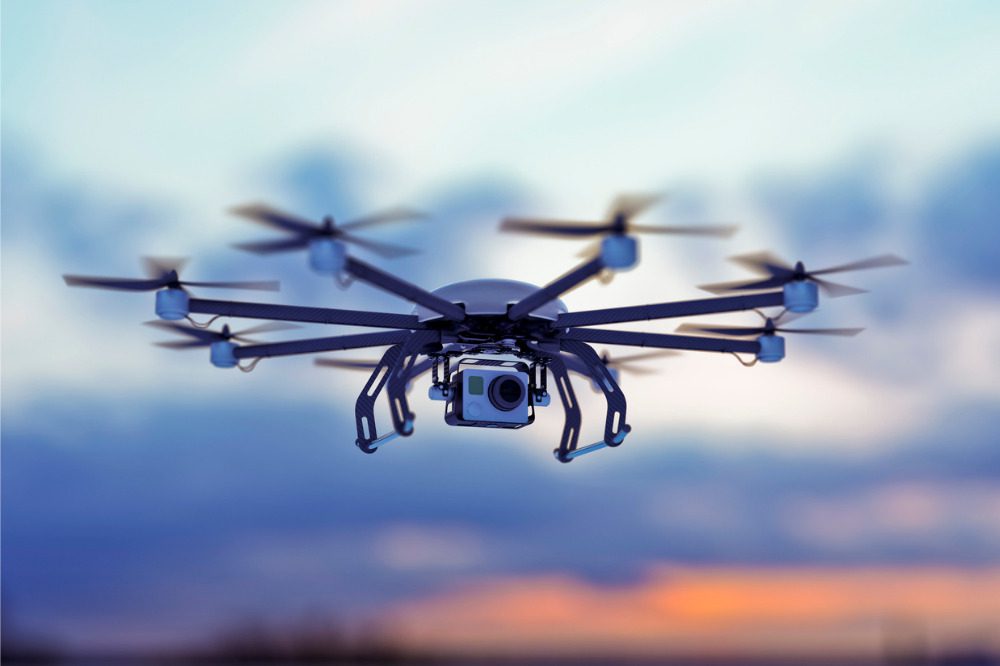Risks to be wary of as the global drone market takes off

Canadian company drone AltoMaxx is engaged in a mission to search for the bodies of missing indigenous children. The drones, armed with ground-penetrating radar technology, scan unmarked gravesites at former residential schools in Sagkeeng First Nation land in eastern Manitoba.
Meanwhile, US retail giant Amazon has unveiled plans to begin drone deliveries later this year. Customers in the California town of Lockeford can soon sign up to have thousands of products shipped to them by drone, though the pilot program for Prime Air is still pending final regulatory approval.
Read more: Contactless drone inspections ease challenges of social distancing
But as commercial drone usage takes off, how should insurance develop in parallel? Trehane Oliver (pictured above), Managing Director of specialist loss adjuster McLarens Aviation, spoke to Insurance Business about the boom in drone insurance.
“[Insurance] products that drone operators buy are similar to those that an aviation operator would buy. There’s cover for physical loss or damage to the drone, and cover for liability,” Oliver said. “The main liability from the operator standpoint is damage done to persons or property on the ground. That’s also similar exposure to what you would have with an aircraft.”
As the risk profile for commercial drones becomes clearer, underwriters’ concerns are becoming easier to address.
“The concern from insurers at the beginning was around the liability exposure: UAVs coming down on houses or people or busy road intersections. But in our experience, there are very few claims that result in significant liability, or anything more than incidental liability losses,” shared Oliver.
“The other assumption that was made early on was that there wasn’t much repairability around a drone. That’s also not been the case. Drones are generally repairable unless they come into contact with water,” he added.
Case study: South Africa
One market that has embraced commercial drone usage on a notable scale is South Africa, where operations range from surveying mines, to crop dusting, and anti-poaching missions. On the heels of this rapid growth, the insurance market evolved quickly, thanks to regular dialogue between loss adjusters, brokers, and underwriters.
“Drones have picked up quite a lot, especially in the mapping and surveillance categories. We also see a lot of agricultural and security surveillance claims. I’d say those industries are the biggest one fastest growing at this stage,” Lara Vivier (pictured directly above), drone surveyor at McLarens Aviation, told Insurance Business.
Based in South Africa, Vivier regularly advises brokers and underwriters on drone risks. She said common claims that arise involve pilot error and software glitches.
“We’ve seen a bit of pilot error in our experience, and it comes down to sometimes [the pilot] is a little bit overwhelmed and might be new to the industry or fresh out of training. Incidents and accidents do happen. We’ve also had a couple of claims where the drones will experience signal loss or connectivity issues,” shared Vivier.
“We’ve had a couple of bird strikes, which you can’t control, as in aviation. We’ve also had claims on motor failure, again like aviation.”
Read more: Drone exposures causing sky-high headaches for insurers
Both Oliver and Vivier said claims related to injuries and property damage caused by drones were comparatively uncommon.
“In North America, for instance, it’s common now for realtors to have flyover video of a house. I have seen a case where a drone taking a video of a house landed on its roof. But that only resulted in replacing four roofing tiles; nothing more than incidental damage,” Oliver shared.
For Vivier, damage claims from drones were more likely to involve chemical spills in a field where a drone crashes or damage to a fence or power cables. “We haven’t had any claims where a person was injured in a drone incident,” she said.
But as drone technology becomes more sophisticated, so do the exposures. Concerns have been raised over possible cyber hacking or privacy violations as liabilities, but Oliver and Vivier said they have yet to encounter claims related to such issues.
“The [drone] industry is heavily regulated in terms of what you can and cannot do. Of course, privacy laws aren’t varied by the fact that there are drones. Generally, the drone operations are well managed from that standpoint, but of course, there is the opportunity for misuse of equipment,” Vivier noted.
Regulatory barriers
The surge in drones’ capabilities and operational efficiency are accelerating demand and creating new opportunities for commercial use. However, strict regulations may hinder the market’s growth.
For instance, the US Federal Aviation Administration (FAA) doesn’t allow drone operations beyond visual line of sight over long distances, meaning pilots must always keep their device in sight, making remote deliveries unfeasible.
Transport Canada also prohibits drones from flying out of human eyesight. In 2019, the Canadian federal government adopted strict new regulations governing the use of UAVs in the country’s airspace, prohibiting them from being flown near airports and emergency scenes. Owners must register their drones, and operators of larger drones must also be certified.
But as calls grow to lower barriers, governments are gradually changing their rules to balance safety concerns and allow expanded drone use. Last year, the FAA published new guidelines allowing routine small-drone operations over people and at night under certain conditions.
Oliver sees operations like those in South Africa spreading as people become more confident about the safety of drones.
“The uses [of drones] are almost limitless, so it’s up to individual countries to decide what is safe or not. But the cost savings and the opportunity that drones provide is enormous. I think there will be a lot of pressure for continued use,” he concluded.





